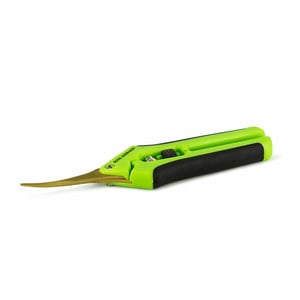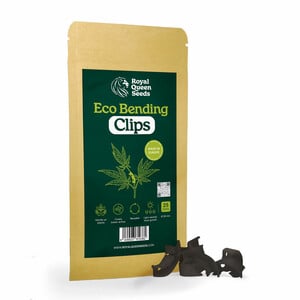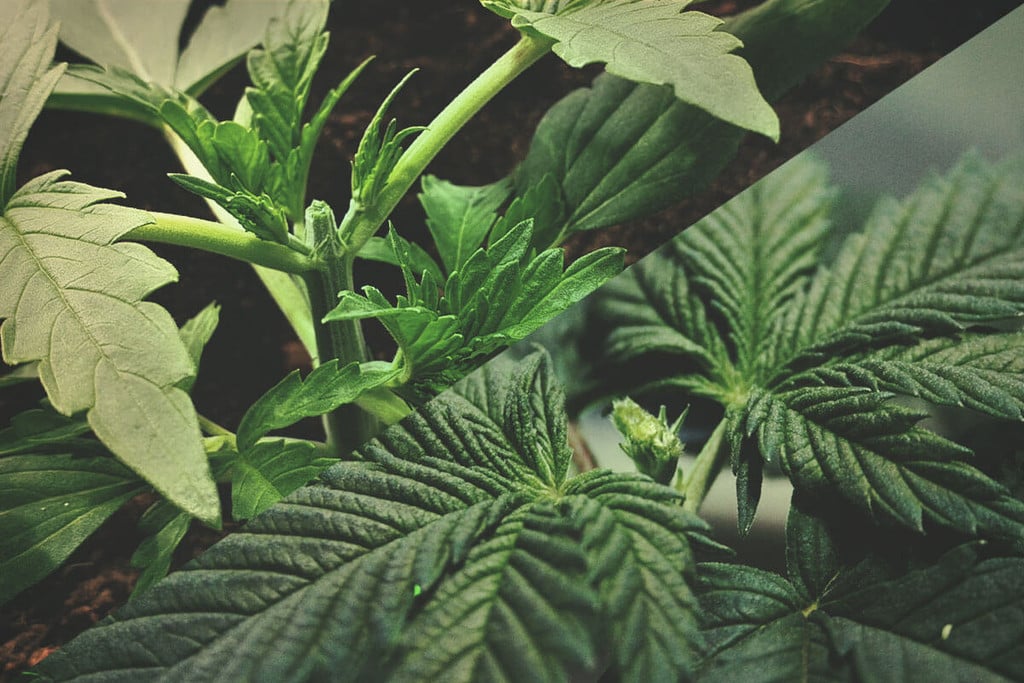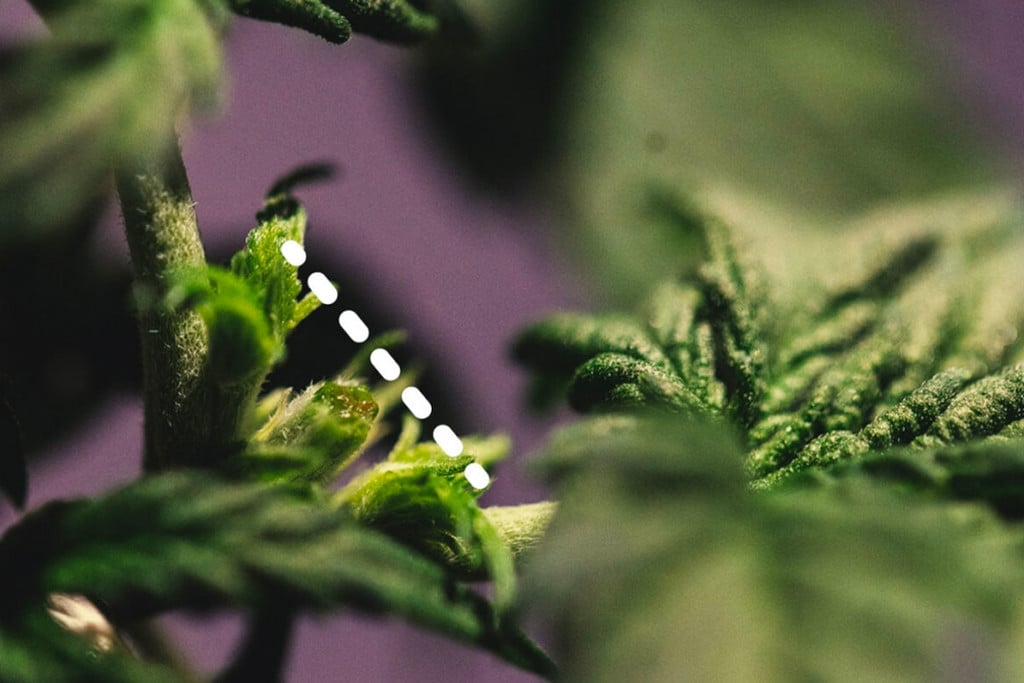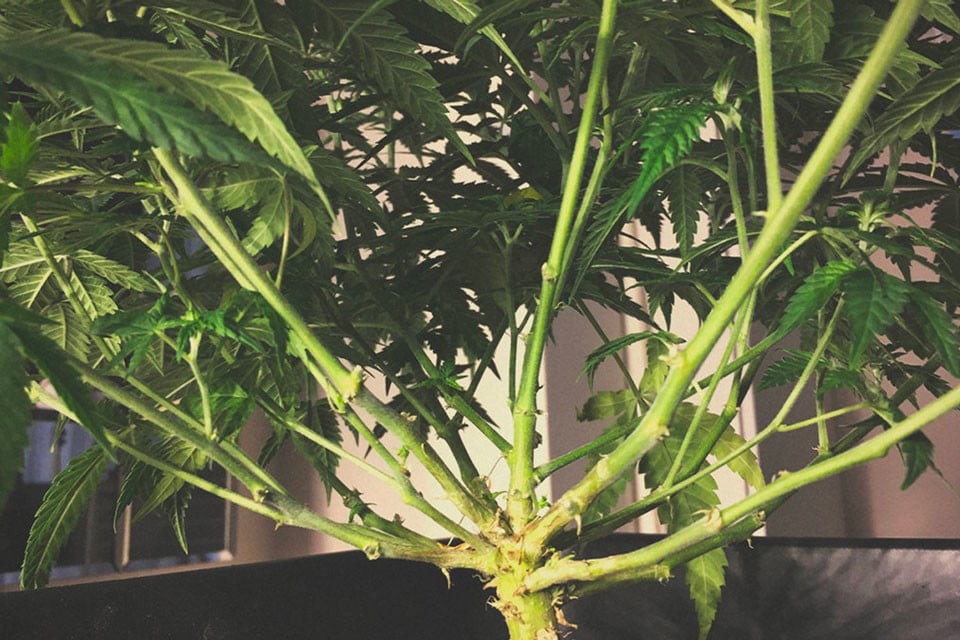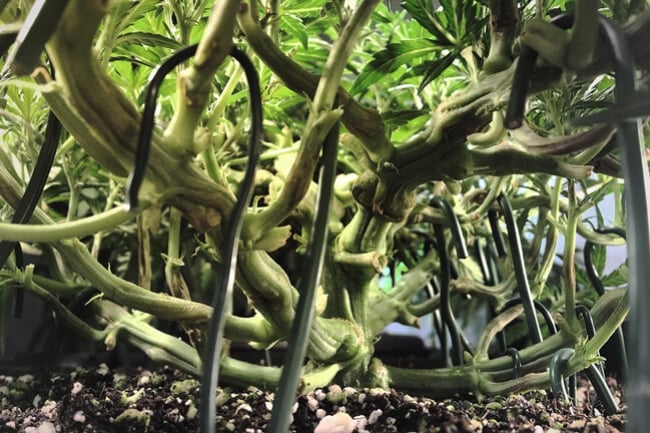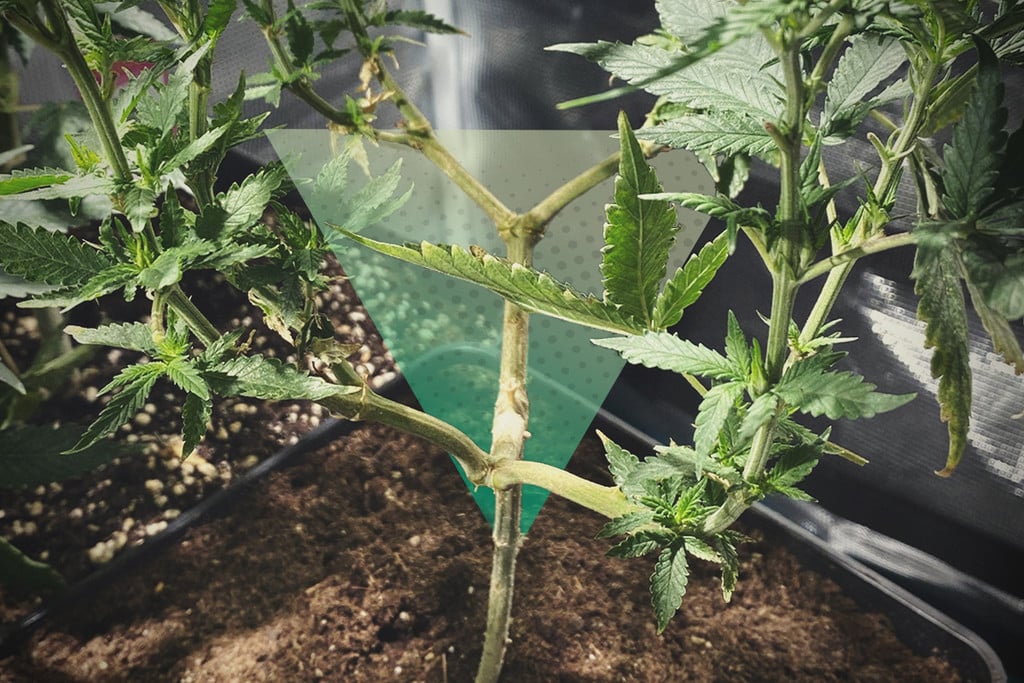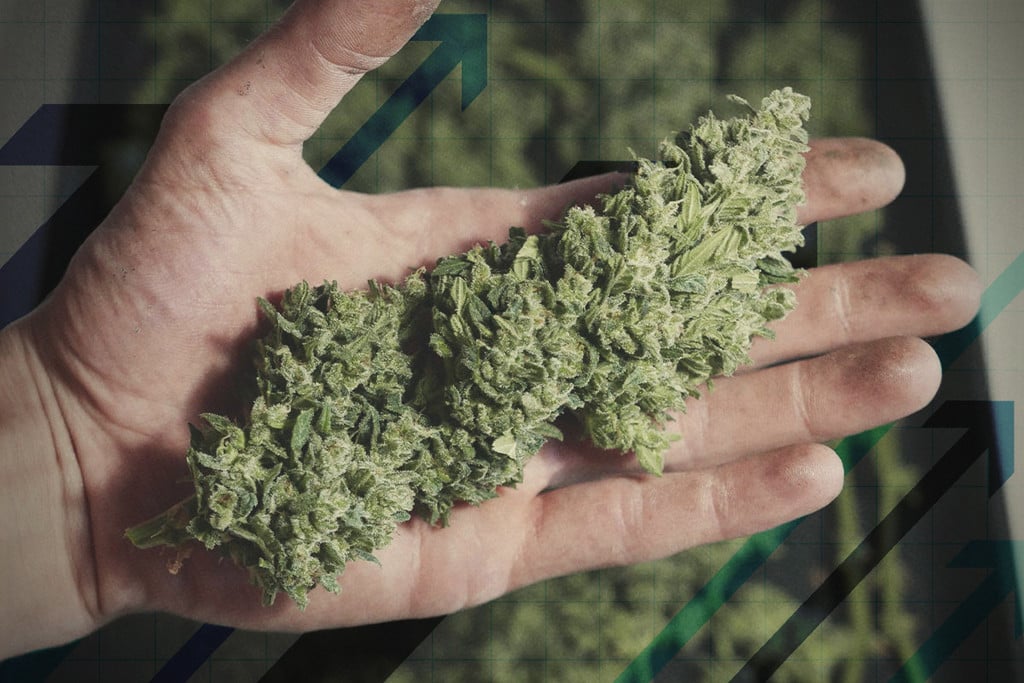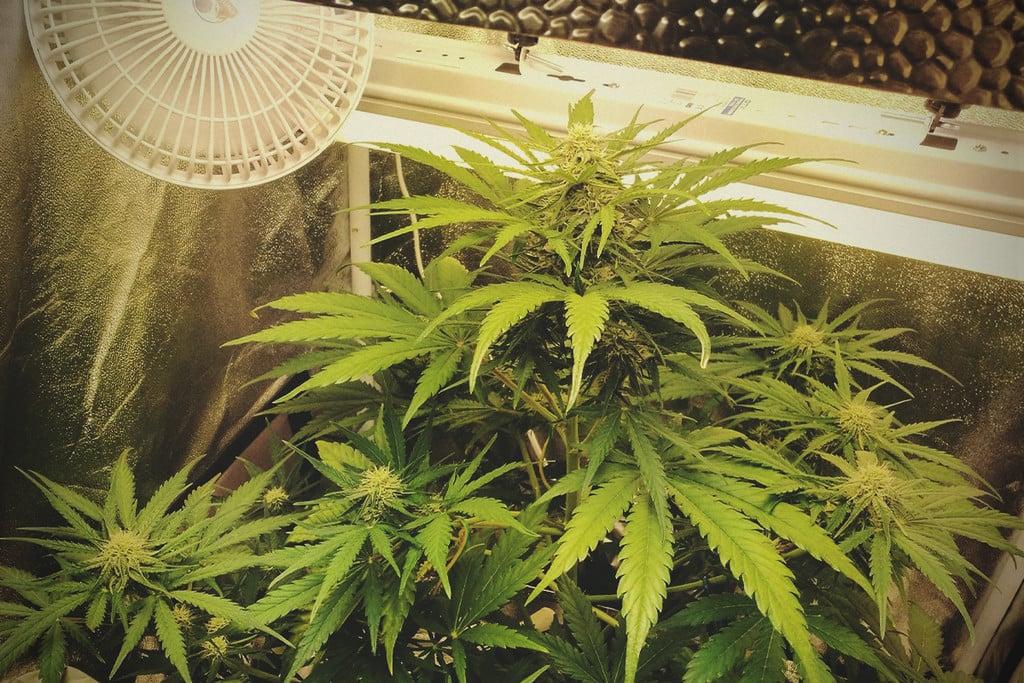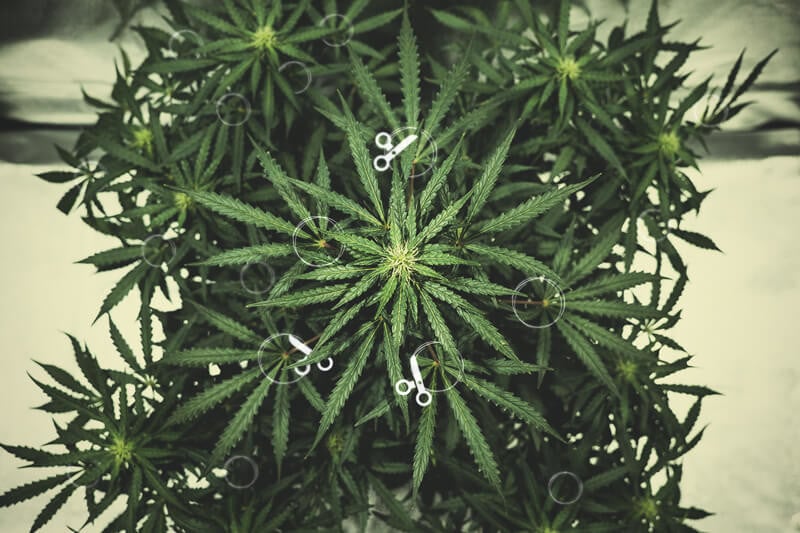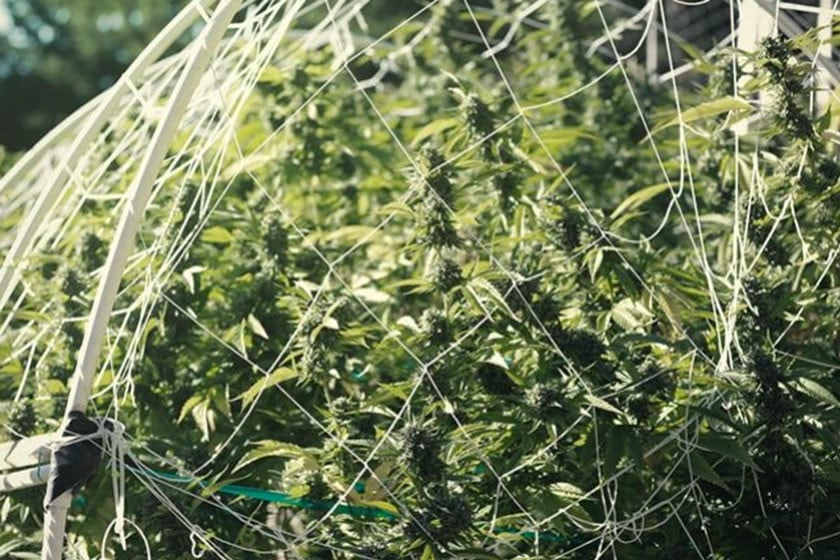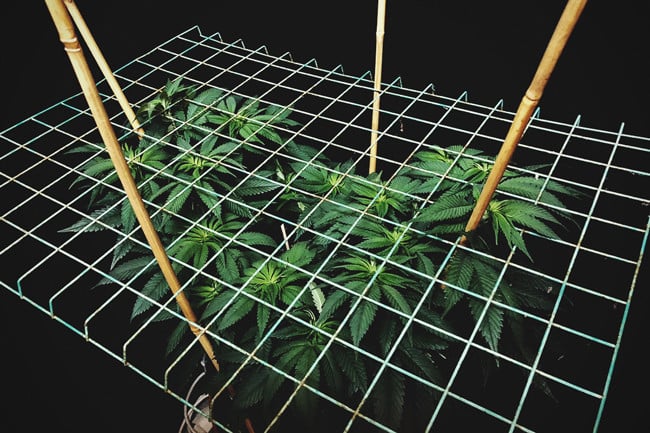.
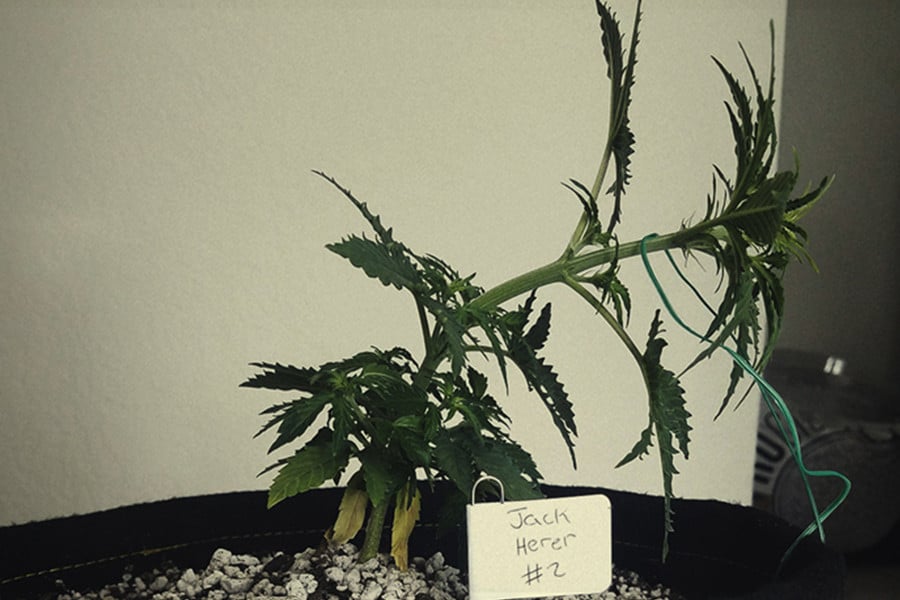
11 Cannabis Training Mistakes To Avoid
Being aware of these 11 cannabis training mistakes will ensure you have a trouble-free grow and get the best from your genetics. Cannabis loves to be trained, but only by those with the care and finesse to do it right.
Contents:
Training Mistakes When Growing Cannabis
Training cannabis plants is a great way to encourage more bud sites and bigger yields. Cannabis responds well, in fact vibrantly, to being trained. Indoors and outdoors, a number of training methods are proven to improve the overall performance of cannabis.
There is no doubt that cannabis is a hardy plant. However, it is not so hardy as to instantly recover from misplaced over-enthusiasm. Plants will eventually recover under most circumstances, but can end up stunted or extending vegetation time significantly. Without a specific time frame, cannabis will recover from the cruellest of attention. But who wants to wait weeks more for lower-quality buds?
Avoiding these training mistakes will ensure you get the quality you are after, in the time frame you want.
Growing Medium Influences How Weed Plants Recover From Training
The medium in which plants are grown can affect response rates in trained plants. Things are pretty much equal with LST techniques, but plants in DWC or hydro respond quicker to harsher treatment than organic soil grows. Soil still benefits from the extra growth, only over a slightly longer time—but a bit of patience never hurt anyone. Depending on the variables of your grow, training techniques will ultimately result in a spectrum of different recovery periods. It all comes down to watching and “listening” to your plants, giving them the time and space they need to recover after being bent, bruised, and manhandled.
1. Not Training
Not training plants at all is the first mistake most inexperienced growers make. Indoor grow spaces are most often limited, and not training means not optimising the production capabilities of any space. Even smaller autoflower varieties respond well to even light distribution over a tied-down canopy.
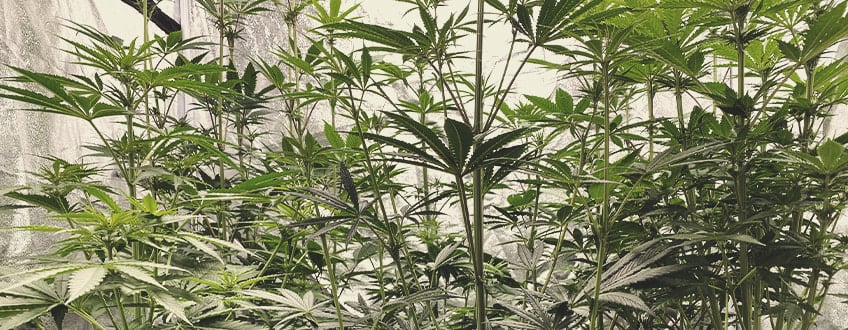
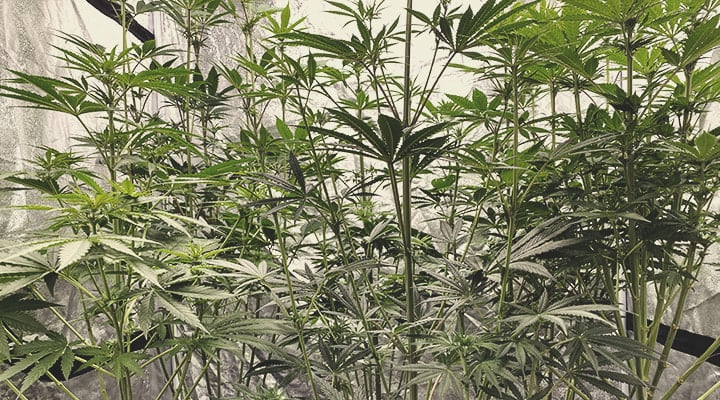
2. Scrogging Fouls
The screen of green training technique places a metal or plastic screen over the plant canopy. New growth is tucked under the screen to form an even sheet of weed that receives equally intense light exposure. During the flowering phase, emerging colas are arranged evenly for maximum light and air circulation.
Only choose this technique if you have the time to spend with your plants, as it can be labour-intensive.
Topping too early and placing the screen too close to the growing medium are an invitation to diseases. Plants need to have good air circulation below the canopy and at the surface of the growing medium.
Not using the screen enough defeats the purpose of this technique. All growth needs to be kept at screen level until at least the second week of flowering. A good knowledge of how plants respond to being topped is essential. If plants simply have a screen placed over them, but aren’t manipulated to suit, then there is simply a grow space with a screen getting in the way.
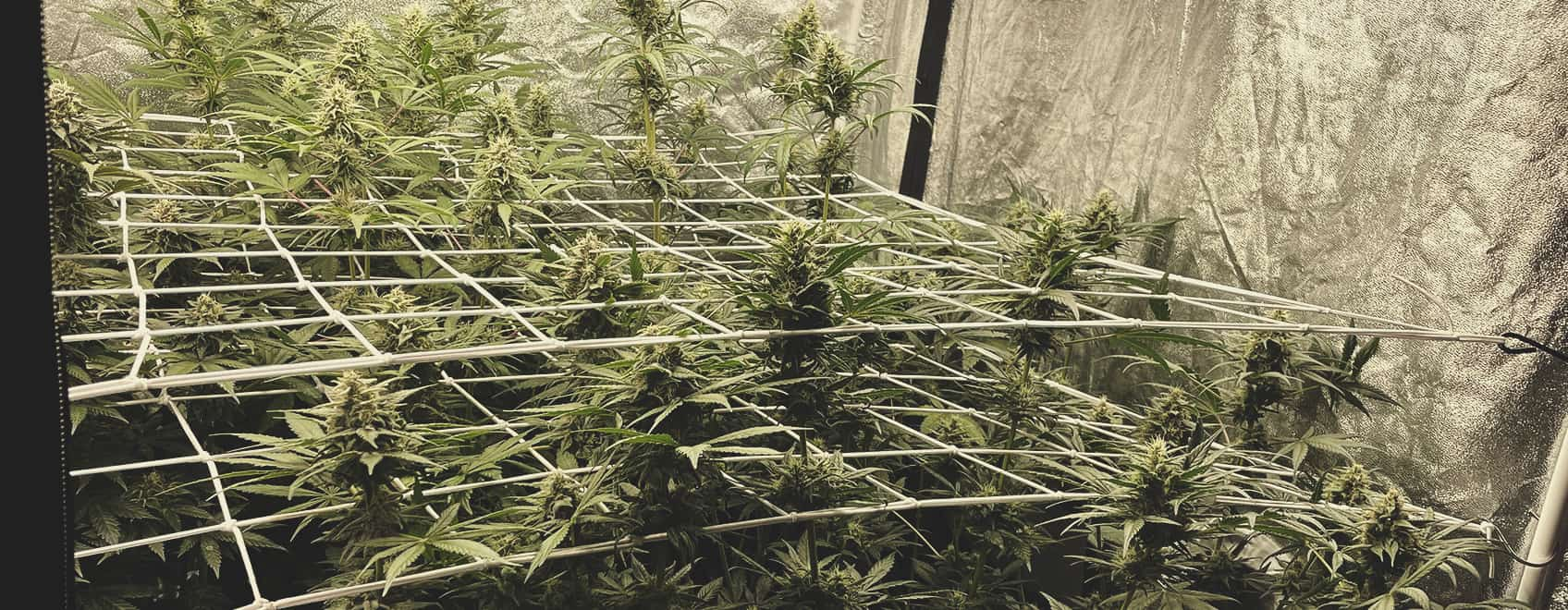
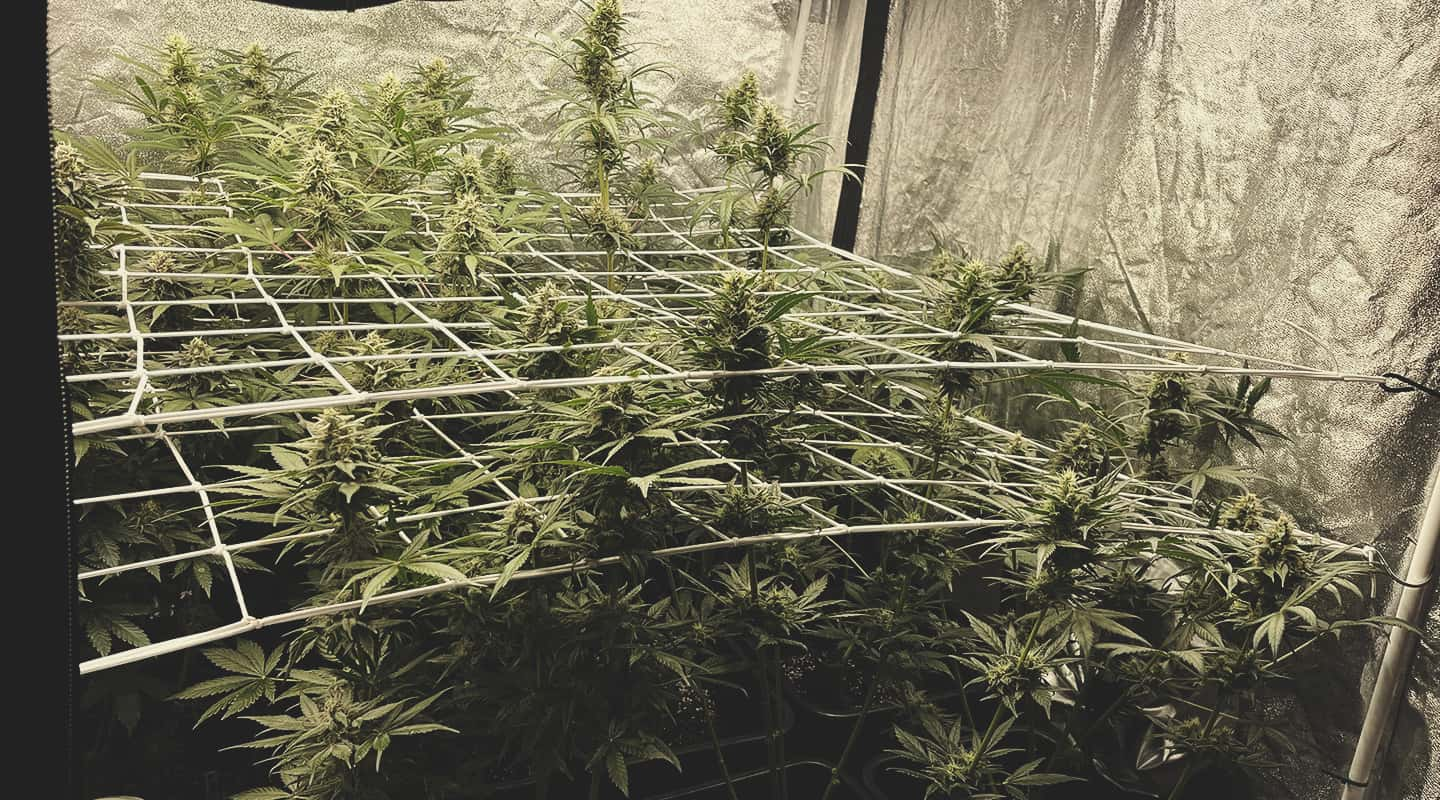
3. Topping Too Late
To reap the benefits of topping, you need to carry out the procedure within a specific window of the growing cycle. While topping in the seedling stage will stunt growth, reaching for your pruning shears too late will cause serious problems during a vital stage of development.
You should aim to top your marijuana plants after they’ve developed 3–5 nodes. At this point, specimens are malleable; they’ve not yet developed a significant structure. Your topping efforts will cause the production of at least two main stems, which not only improves yield potential, but makes for bushier, more uniform growth.
If you miss the mark by a couple of weeks, however, your plants will have already started to adopt the default “Christmas tree” structure, wherein one large central cola develops. You can still top at this point, with a relatively low risk of fudging up your yields, but wait any longer and it’s not worth the risk. You certainly shouldn’t attempt topping during the flowering stage. Your plants will pour precious resources into recovering from the snip, rather than directing them toward developing plump and resinous flowers.
4. Whoops! Snapped Branches
Snapped branches and training too early (before plants are strong enough) are the most common mistakes made by growers. Snapped branches can be splinted and taped back together, but the recovery time is extensive, while plants that are still too young for training can become stunted as they are not yet strong enough to respond with vigour. Let plants grow to the sixth node before attempting training methods. Take it gently yet firmly, and get the timing right.
5. Performing HST Techniques Too Late Into Flowering
HST techniques are reserved primarily for the vegetative phase for good reason. At this stage, the branches of your plants are less rigid, making them more suitable for the squeezing and reshaping that takes place during super cropping, for example. Defoliating and fimming before flowering also gives plants ample time to recover and take on their new growth pattern. Conducting these procedures during flowering will only interrupt bud formation, inflict undue stress, and increase the risk of snapping branches.
There are some occasions in which growers use HST techniques like defoliation during the flowering stage, but this is mainly to prune dead or dying growth in the final stages of bud development. Moreover, these methods tend to be utilised by the more experienced growers out there.


6. Mainlining Mishaps
Mainlining involves topping a plant a number of times, then undershucking the branches so only main colas are grown. Branches are tied into positions to maximise light and air distribution.
Topping too early, then too often, is a common mistake when mainlining. Too early, and plants take longer to recover, then new growth is too close to the grow medium, preventing air circulation and risking disease. Then, when aiming for 16 or more colas, branches need to grow enough before being topped again so the plant volume doesn’t become overcrowded. Topping all new growth successively will create a slow-growing, poorly structured plant.
A good rule of thumb for a well-distributed plant is to wait to top again until you have the same number of nodes as what number topping it is. After the first top, let two nodes grow before the second top, then let three nodes grow before the third top, then let four nodes grow before the fourth top. This way, plants won’t fight for space and will remain vigorous at each topping.
7. Forgetting The “Low” In LST
Low-stress training techniques expose as much leaf surface area to light, then as much bud surface area to light as practical in any grow space. Branches are bent and tied into position to optimise light penetration. At its simplest, it can involve bending a young plant over; at its most complex, it can be a large ScrOG.
Low-stress training techniques require plants to be handled often. Disrespect the natural tolerance of cannabis and it will break for sure. Every grower at some point has cringed to the telltale crunch of a branch snapping through, then painstakingly repaired the injury while trying not to break any more branches. Be confident but gentle—the difference between bent and broken is tiny, especially with strains that have a crispier and stiffer texture.
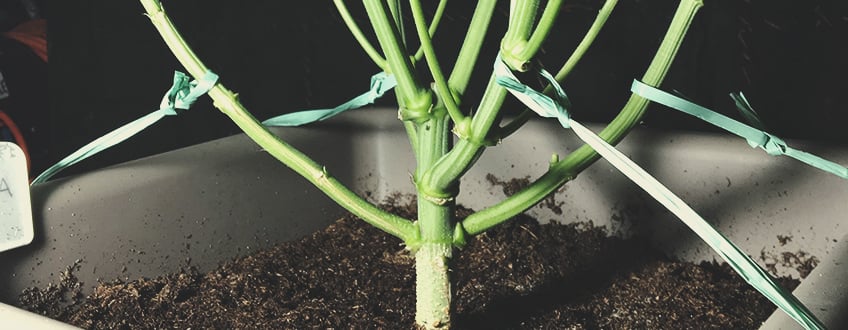

8. LST: Using Ties That Damage Plant Tissue
LST (low-stress training) offers a host of benefits. It improves plant structure, aeration, and yield, all while inflicting minimal stress. The process involves tying down branches to encourage lateral growth and even light penetration, in place of the harsher pinching and slashing involved in HST. As a consistent and reliable technique, many growers use LST during every grow.
But some cultivators quickly run into issues by using the wrong materials to tie their plants down. Hard materials such as metal and rigid plastic—and those that readily heat up—can cause serious damage to branch tissue in the form of burns and wounds. Play it safe by only using soft plant ties or bending clips that are kinder to branches and give them room to swell. If you’re wondering when to start low-stress training, the earlier in the vegetative (not seedling) stage, the better!
9. Not Supporting Heavy Cannabis Buds
Sometimes, selective breeding and modern nutrition can backfire. Sure, they produce massive, resinous flowers, but oftentimes the plants’ branches aren’t capable of handling such a load. What use is premium genetics if it causes snapped branches and flowers that tumble to the ground before ripening? Don’t worry, we’re not instructing you to grow smaller buds—just give your plants a helping hand! Use trellising and support structures (tomato cages work great) to offload some of that weight and ensure your flowers make it all the way to your bong bowl!
10. Over-defoliation
Defoliation is the select removal of leaves at specific stages of growth in order to enhance plant performance. During vegetation, the increased light penetration into the understory of the plant increases overall growth. Then, in the early budding phase, removal of leaves stimulates growth in the flowering part of the plant.
Be sure to remove the right type of leaves when defoliating. Only remove fan leaves—not sugar leaves. Fan leaves are the large ones that form at a branch; sugar leaves, on the other hand, are part of the bud structure. Removing the wrong leaves is one step forward and two steps back.
Taking off too many leaves makes for a long recovery time. Beginners should start off gently, and then let experience make them more cavalier. If time was no problem, cannabis could recuperate from an utter stripping, and will even force new growth through bare trunks and branches. But it takes a long time, so don’t despair when things are overdone, just a bit of patience is required.
Make sure plants are full-on vegetating before removing leaves. If plants are too young, they will simply be damaged. As a very general rule, if the new growth does not look robust enough to support itself without the sustenance from the adjacent fan leaf, leave the leaf on. When fan leaves are taken off too early, the plant will consider the emerging branch a dud, and it will end up stunted as the plant concentrates energy somewhere closer to the light. As a result, a potential flower site is lost.
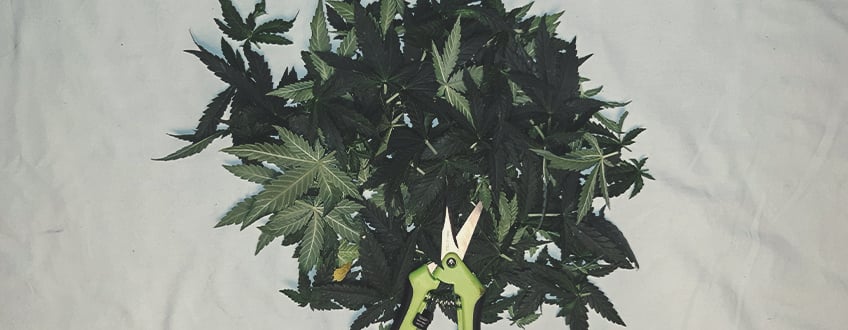
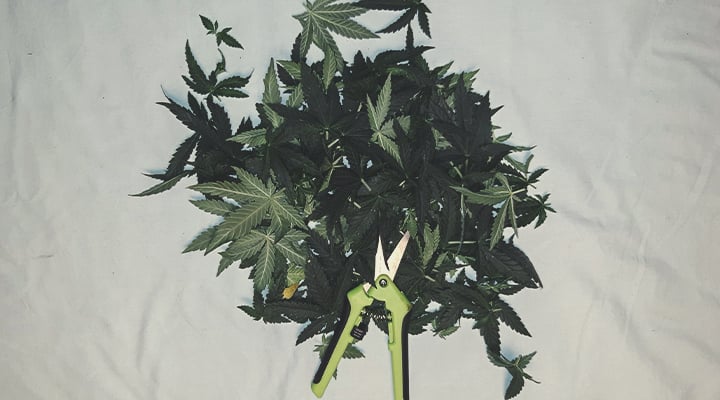
11. Performing HST on Autoflowering or Weak Plants
Autoflowering plants erupt from seed to harvest in around 10 weeks. This impressive speed allows growers to secure a stash within a brief window. But such brevity means you’ll need to minimise stress. Performing HST on autoflowering plants leaves them little time to recover; even one week of downtime can greatly impact growth and yield.
You should avoid carrying out HST on weak photoperiod plants for a different reason. While they have all the time in the world to recover, chances are such stressful techniques will land a blow that finishes them off. Understand that, this time, you need to allow them to grow with minimal intervention.
Train Your Cannabis Plants With Care in Mind
Cannabis training techniques are valuable and, for the most part, accessible to growers of various skill levels. Stress-training weed offers a quick and reliable way to improve plant structure and enhance yields.
However, you need to ask yourself some questions before pinching branches and cutting off fan leaves. Will your autos recover in time? Is your weak plant capable of bouncing back? Reserve training—especially HST—for healthy plants growing in optimal environmental conditions. After performing a procedure, administer extra nutrients to give your plants everything they need to come back stronger.


























